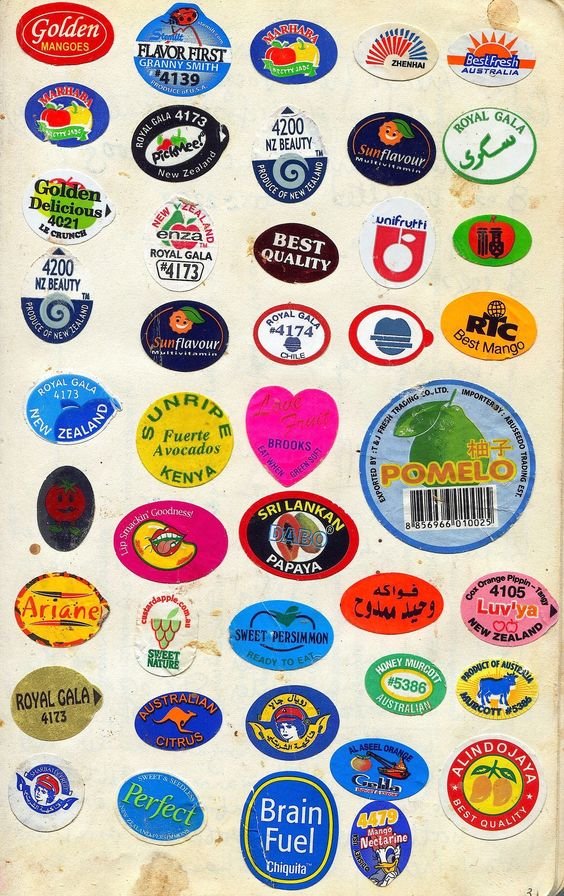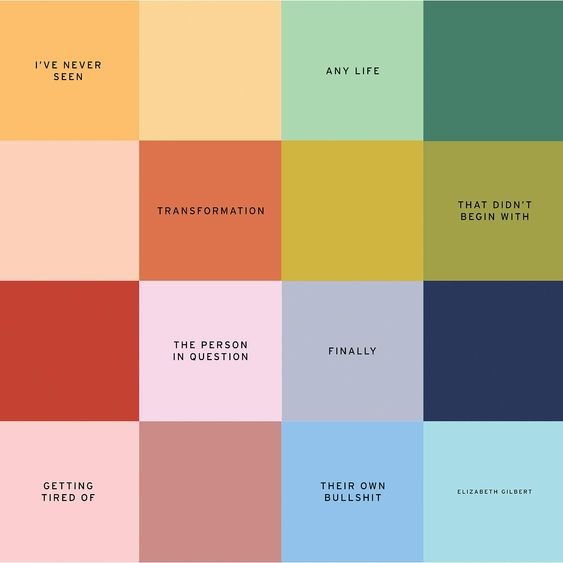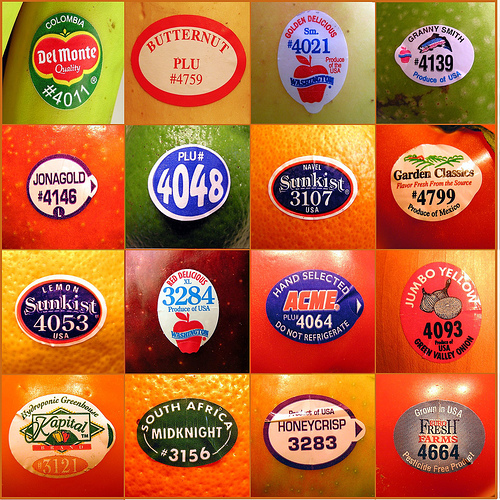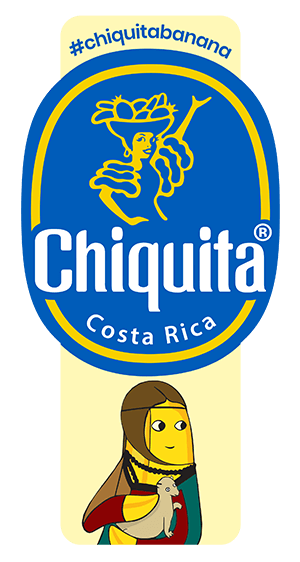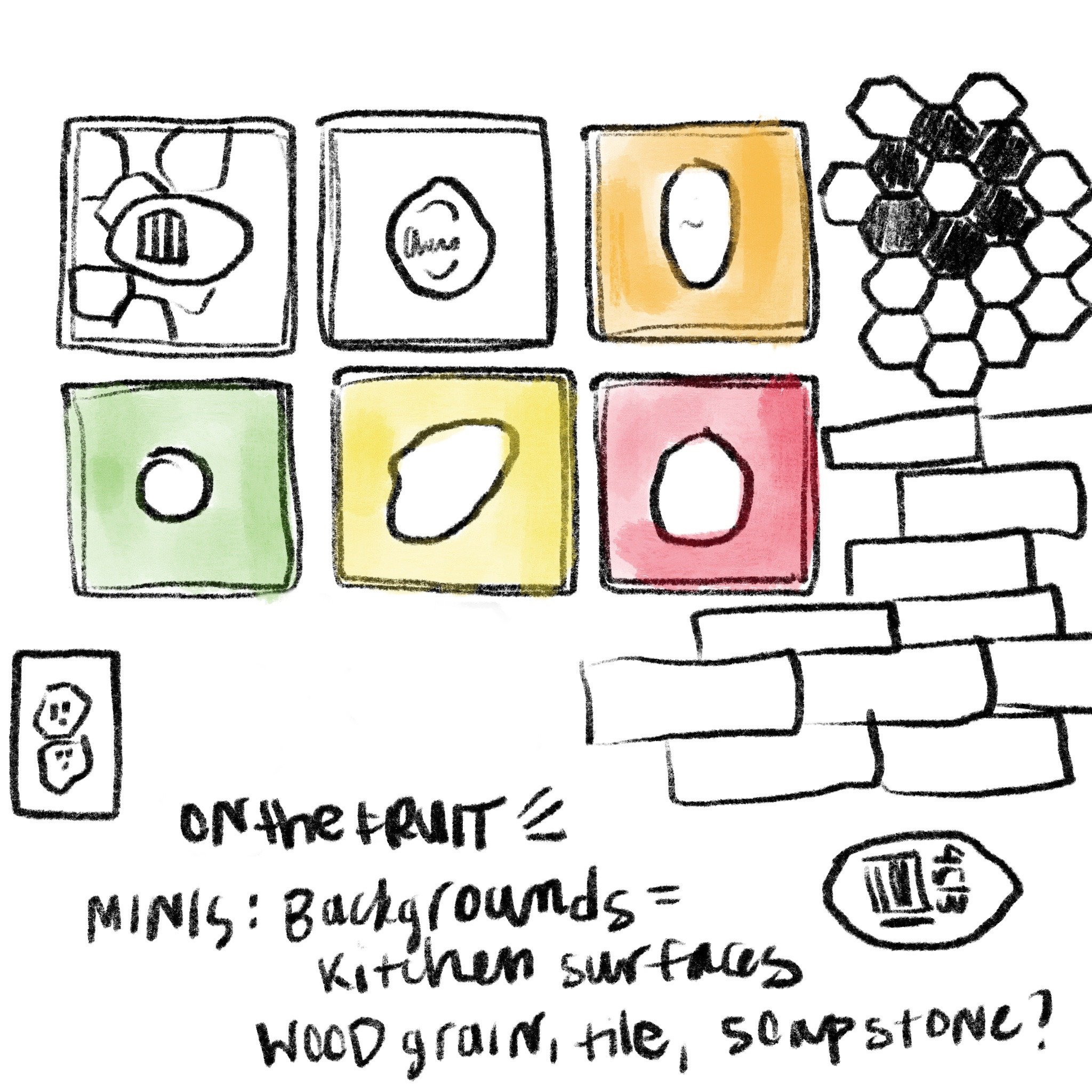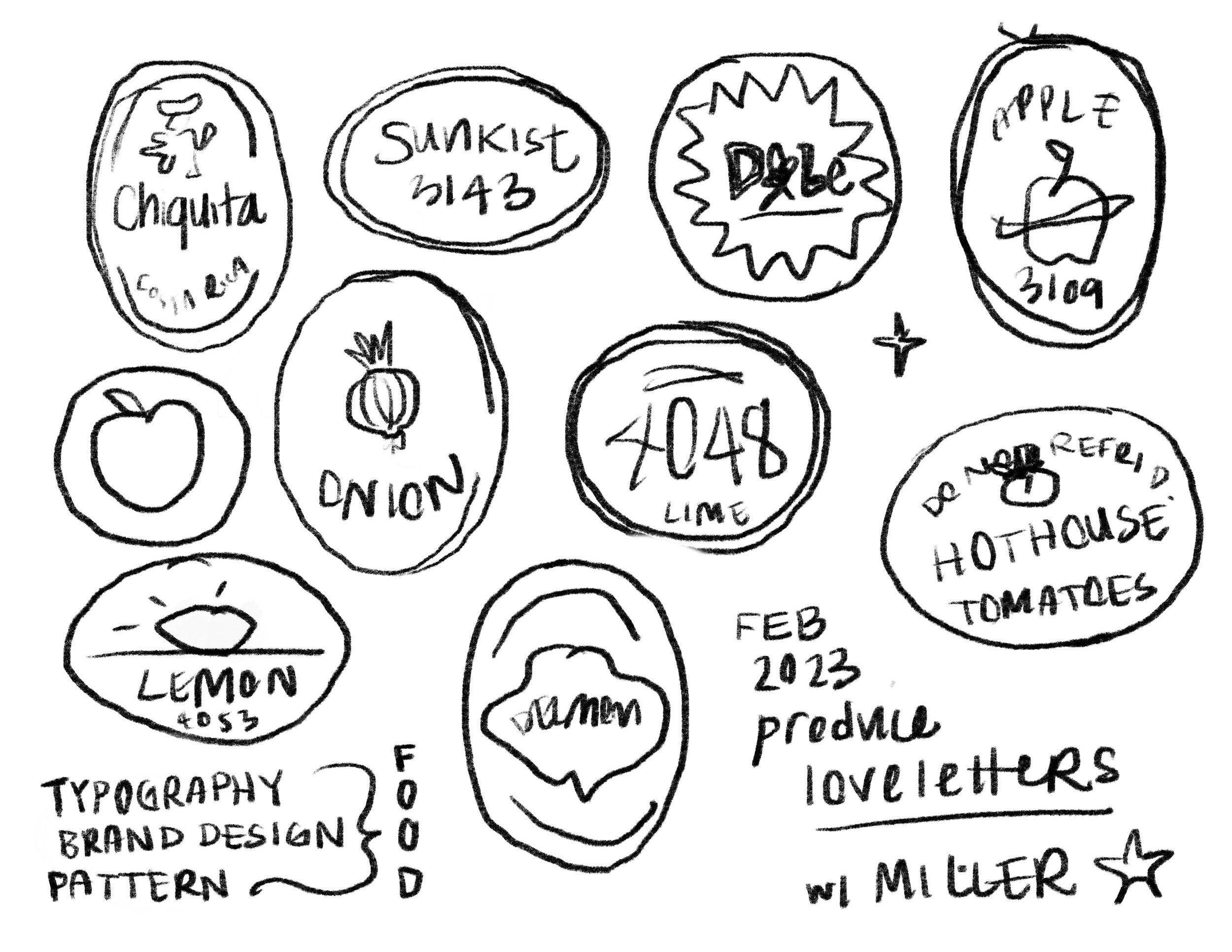New Series: Produce Love Notes
To choose what you eat is a privilege. I am humbled that my life could be summed up in grocery lists. A list for the farmers market, a list for harris teeter, even a list for whole foods market. Cooking is my favorite past time, and sourcing the best ingredients is something I spend a good deal of time thinking about. I keep a binder of my favorite printed recipes that I reference daily.
This painting series began when I noticed all of the produce stickers stuck on each recipe paper, completely forgotten and unintentionally placed. I started researching produce stickers new and old and saving references of all my favorites. I was inspired by all of the quirky illustrations and fonts that made up each of these unique stickers. I sketched some of my favorite designs and played around with how I wanted to arrange them. I eventually decided that making the focus on color interactions would play well with highlighting the graphic design of the stickers.
Noticing all of the different countries of origin on each sticker, I began to think more about our food chain on a large scale. How fascinating it is that we can have strawberries year round from the grocery store, when 40 years ago they were only eaten in season. Global production makes this possible and is the root of the facade of abundance when shopping the aisles of the produce department. Why a facade? Because of the high cost that is took for the food to be grown, processed, and transported across the globe to stock those shelves. Who bares the weight of that cost? I believe that more often than not we don't think about where our food is coming from. When we buy more than we need or from somewhere around the globe, we aren't making the best decisions as a consumer in regard to our planet.
“Over the past several decades, the shift in American values, culture, policies, technology, and infrastructure have had a direct impact on the country’s systems, including those producing and distributing food. Designed by people in power, these systems were shaped around the priorities of society and for decades these included efficiency, convenience and cost. While these systems were effective at centering these priorities it also gave rise to a culture of fast, easy and cheap consumption. The benefits has come at the expense of human lives, health and safety, equity, environmental degradation, the erosion of local economies, rural blight, etc.:” (Source: Edible Charleston, “Returning to Our Roots.”).
It became even more obvious during the pandemic that the system was not designed in humanity’s best interest. This leads me to ask, what food do we put on our plates that aligns with a more sustainable food system? It is in the power of consumers to buy differently. We need to create a food system that keeps people healthy. We need small organic and regenerative farms, an efficient distribution system so everyone has access, and regulations (or eliminations) of all synthetic processed and industrialized foods.
The Take Away: Choose local, seasonal, organic and sustainable food when possible; because sustainable food options usually come with a smaller carbon footprint. (source foodprint.org)
The 30in x 40in painting will be available online March 1 with The Miller Gallery. It will exhibit in the group show ”Statement Piece” at Hed Hi Studios on March 10, 6-10pm. I will also have a new collection of over 10 small paintings available online March 27 at Miller Gallery in this same theme. I am looking forward to sharing more!

